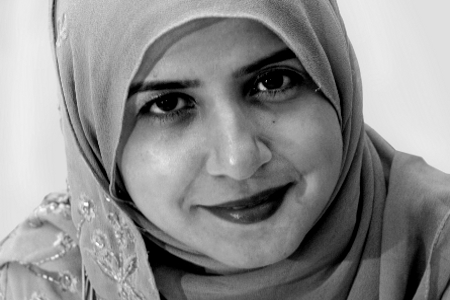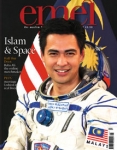
The Genderlessness of Goodness
Issue 80 May 2011
There are precious few role models available to Muslims — whether male or female. We can’t afford to categorise them by gender.
It is quite common to hear talk of how Lady Khadija, the first wife of the Prophet Muhammad, is an excellent example for women. She was a feisty, successful businesswoman also known for her integrity and moral character and her belief as the first woman to accept the word of her husband that he had received revelation from the Creator and had been appointed as His Prophet.
She is held up as a role model for women. But why are men not directed to emulate her in explicit terms? Men too should aspire to be successful in their careers, deeply moral in character as well as excellent and supportive spouses.
Yet this pattern of outstanding women from Islamic history being held up as an example for women only is too often repeated. Lady Maryam is held up as an example for women to be chaste; but men should be chaste too. Lady Fatima is spoken of as a supportive child, the best of spouses and a spiritual light; qualities men should hanker after as well, right? Lady Hajirah was a model of patience and forbearance in looking after her child in a foreign, barren land. She’s a great example for mothers everywhere—and for fathers too. Yes, of course there is a more direct connection: it is a truism that those who are similar to you, that you look up to, can have a profound effect. But all role models gain their status because they have something universal to offer all human beings. The Qur’an, for example, is replete with stories of incredible people — recounted for both male and female believers.
You might say that this is really no big deal, arguing what is wrong with men emulating men and women being held up as examples for women? In a basic sense, there is no issue since it is better for people to follow some role models than none at all. However, it is important in a big picture sense.
This attitude belies a deeper societal issue we face — that maleness is considered the norm, and therefore applicable to all, whereas femaleness is only applicable to females. That both are human beings with humanity as the shared universal norm is totally missed. Let me give you some examples.
In mosques, all the activity takes place on the male side, with women’s needs dealt with through (often poor quality) audio visual systems, often in second rate accommodation. If a speaker lectures from the men’s side, it is difficult or almost impossible for women to contribute to the discussion. Maleness applies to everyone, but female contribution is only able to benefit women. What a waste of ideas, talent and fresh perspectives.
Consider also English translations of the Qur’an. The words “ya ayyuhan nas” which is the generic call to humanity, is often translated as “O Men!” lending weight to maleness as the norm. A much more accurate and inclusive translation would be “O People!”.
In today’s world there are precious few role models available to Muslims— whether male or female. We can’t afford to categorise them by gender. Instead, we need to highlight the qualities that they have, and aspire to follow their actions.
In addition, it means that important ‘feminine’ qualities are not considered important for men, qualities like mercy, compassion and gentleness. Yet it seems extremely apparent that these ‘feminine’ qualities are in short supply in our societies. It is important that young men grow up recognising the value of female role models, because this will translate in real world terms to greater respect for women, their worth and their contribution.
The Qur’an holds up several female role models such as the mother of Maryam. She expresses her surprise that God has given her a daughter when the child had been promised to be dedicated to the temple in which only men served. And yet her words have a deeper meaning—to point out that God used the example of Maryam to be a role model to serve in His way for all human beings, making the specific point that women can be role models for men also.
It seems we still need to pay heed to this lesson.
Shelina is the author of Love in a Headscarf, and writes a blog at www.spirit21.co.uk
Bookmark this |
|
Add to DIGG |
|
Add to del.icio.us |
|
Stumble this |
|
Share on Facebook |
|
Share this |
|
Send to a Friend |
|
Link to this |
|
Printer Friendly |
|
Print in plain text |
|


Comments
0 Comments